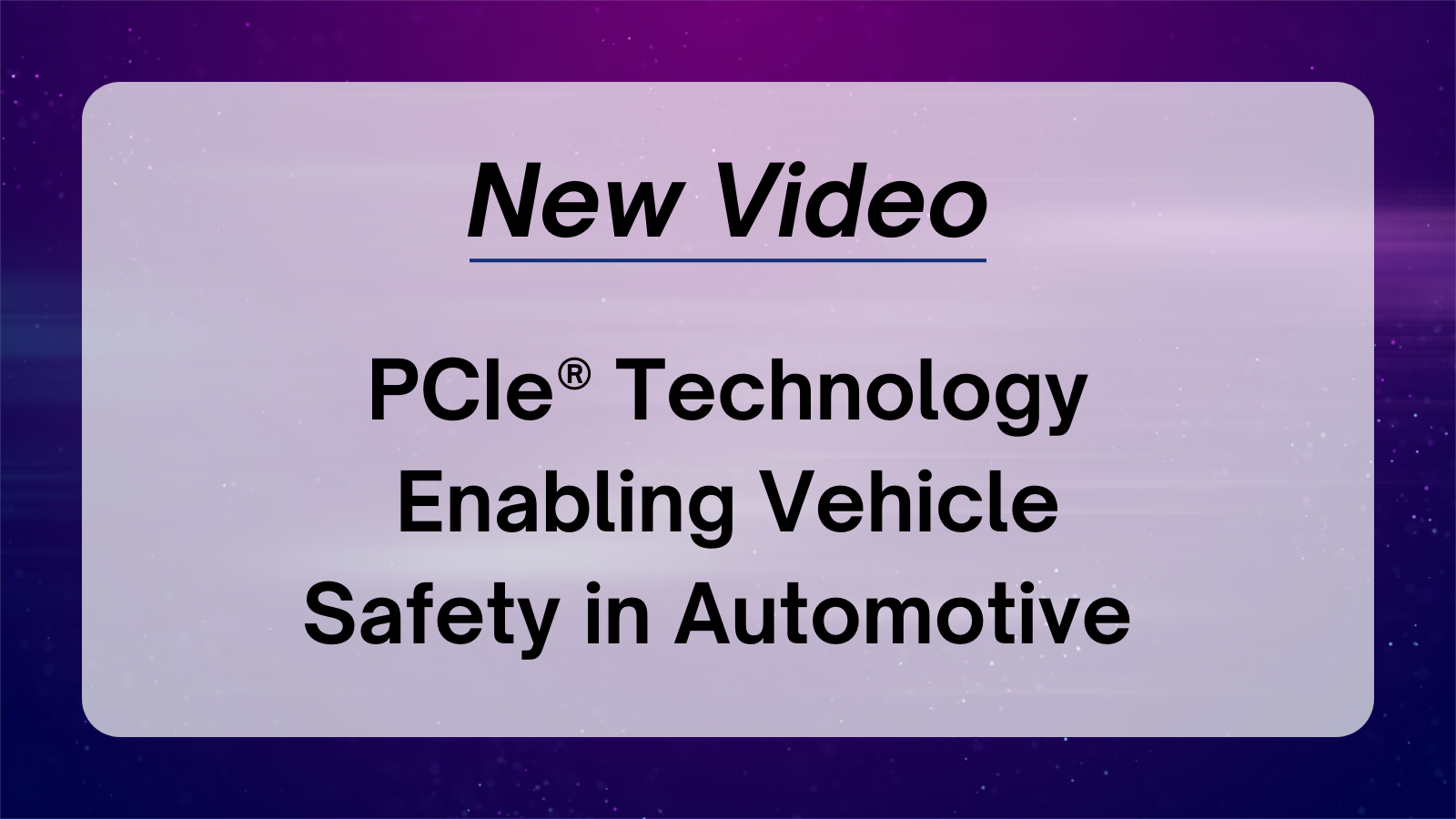New Video – PCIe® Technology Enabling Vehicle Safety in Automotive

As the complexity of computer workloads in the automotive market increase, so does the sophistication of computers in vehicles, along with the interconnect performance requirements. A unique emerging challenge is Automotive Functional Safety (FuSA). FuSA is the implementation of protective measures to eliminate or mitigate hazards caused by the failure or unintended behavior of a vehicle-level system. Safety measures are essential to the development of automotive products but require intricate solutions to ensure that they succeed.
PCI Express® (PCIe®) architecture contains the requisite error detection, correction and reporting features, along with redundant architectures for vehicle-level system functional safety implementations. The ubiquitous nature of PCIe technology makes it a viable option for the automotive market interconnect as a cornerstone interface in the computing industry for both consumer and enterprise applications.
How PCIe Technology Enables Vehicle Safety
Advances in driving assistance systems are evolving automotive compute architectures to a zonal topology. Condensing the Electronic Control Units, or ECUs, into a high-performance compute complex lowers cost and improves performance. This concentration reduces signal reach requirements and enables the adoption of PCIe technology. Benefits such as scalability, demonstrated performance and durability show that PCIe technology is a natural fit.
PCIe architecture in vehicles classifies errors as correctable and uncorrectable. Uncorrectable errors are classified as fatal or non-fatal. This built-in error characterization simplifies the Failure Modes, Effects and Diagnostic Analysis (FMEDA), which is required for systemic fault management per the International Organization for Standardization ISO-26262 Automotive Safety Integrity Level (ASIL) D certification, an important requirement in the automotive industry.
PCIe Architecture Facilitates Autonomous Driving
PCIe technology capabilities can also enable Advanced Driver Assistance Systems (ADAS) and software-defined vehicles — supporting the evolution of the automotive market. ADAS is broken down into six levels from zero to five. Levels four and five ADAS, which are high and full-driving automation, have the most demanding workloads shaping automotive computer platforms. These two levels can be broken down into the constituent functions and the resulting workloads:
- Perception module to visualize its environment
- State estimation and localization module to navigate its position in this environment
- Motion planning module to make decisions and generate trajectories
Of these three functions, perception has the largest workloads. First, a self-driving vehicle has the equivalent of up to twenty “eyes,” which includes six to eight high-definition cameras, radar and lidar. Each of these streams must run a deep neural network with an AI model through an inference process. These workloads may need up to 100 times more compute power with significant latency sensitivity and are driving the adoption of PCIe technology in automotive.
The Future of PCIe Technology in Automotive
The increase in improvements for vehicle safety and autonomous driving with PCIe technology will continue to grow. According to the “PCI Express Market Vertical Opportunity” report from ABI Research, the total addressable market (TAM) for PCIe technology in the automotive sector, which includes both storage and non-storage, will grow from US $77.97 million in 2022 to US $3.61 billion in 2030, at a compound annual growth rate (CAGR) of 53%. Most of this growth is attributable to the rapid acceleration of automotive software deployment. With the creation of the PCI-SIG Automotive Work Group in 2021, PCI-SIG has created a space for PCI-SIG members actively designing and deploying PCIe architecture in automotive designs to participate in this growing PCIe technology application. Automotive innovators are invited to become a member of PCI-SIG and join the PCI-SIG Automotive Work Group to shape the future of PCIe technology in the automotive industry.
Watch the Video to Learn More
PCIe technology in automotive provides enhancements to vehicle safety with error detection features and provides more power and latency sensitivity to support growing autonomous driving needs. Learn more about the role of PCIe technology in automotive in my PCIe Technology in Automotive video on the PCI-SIG YouTube channel.
